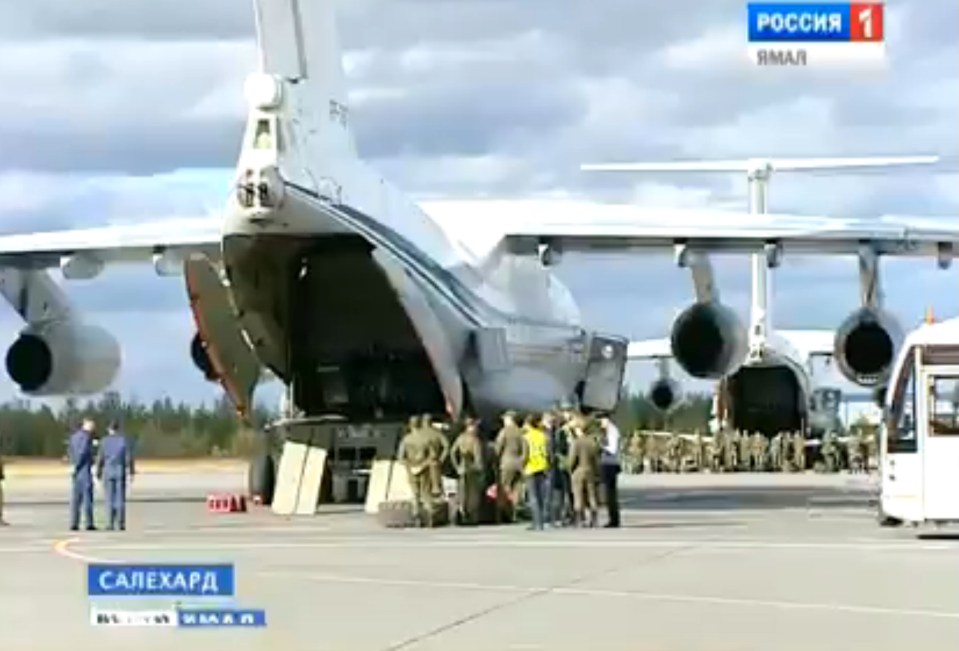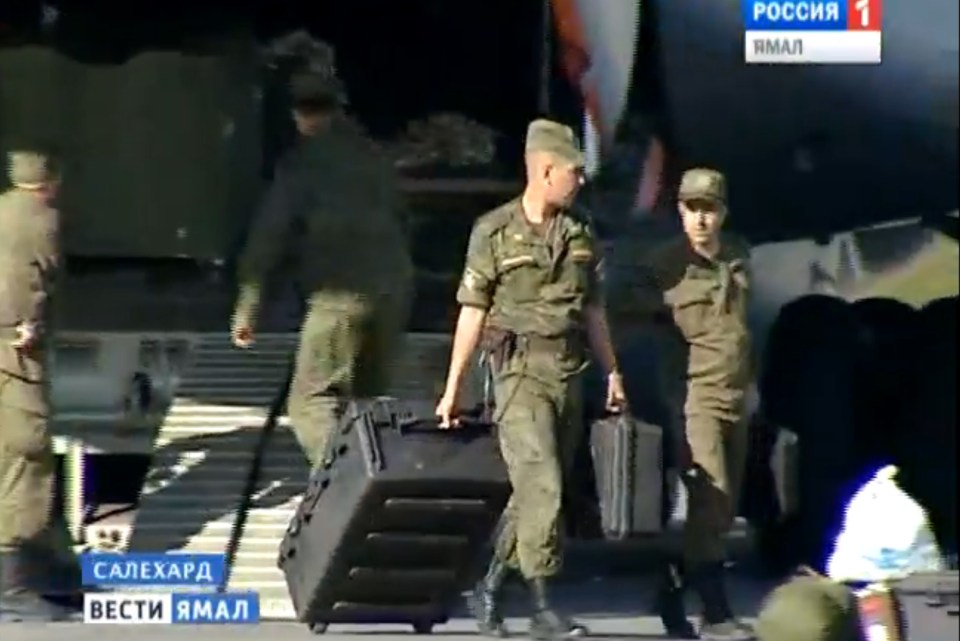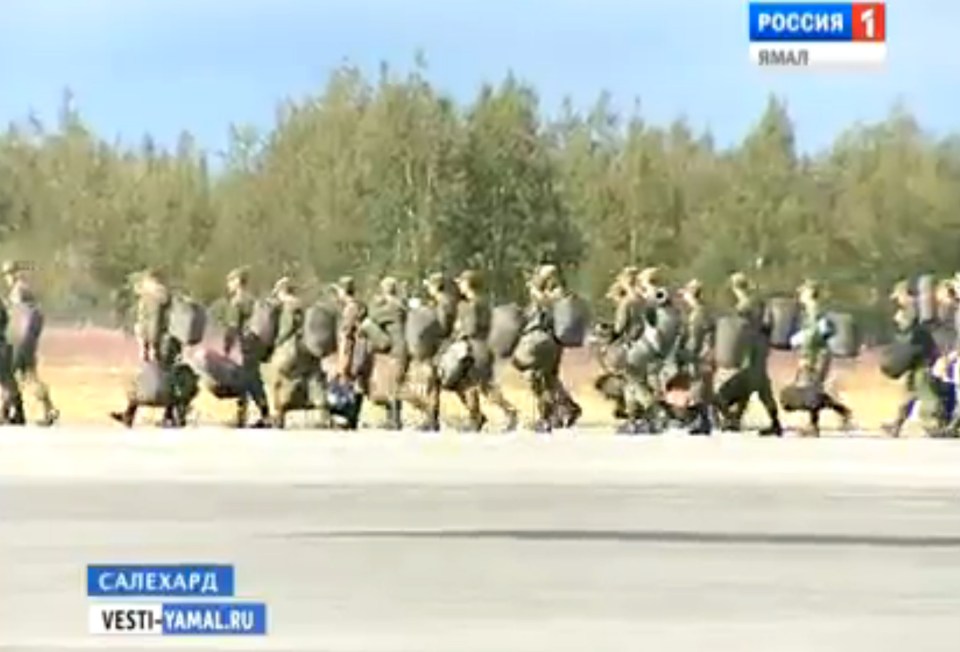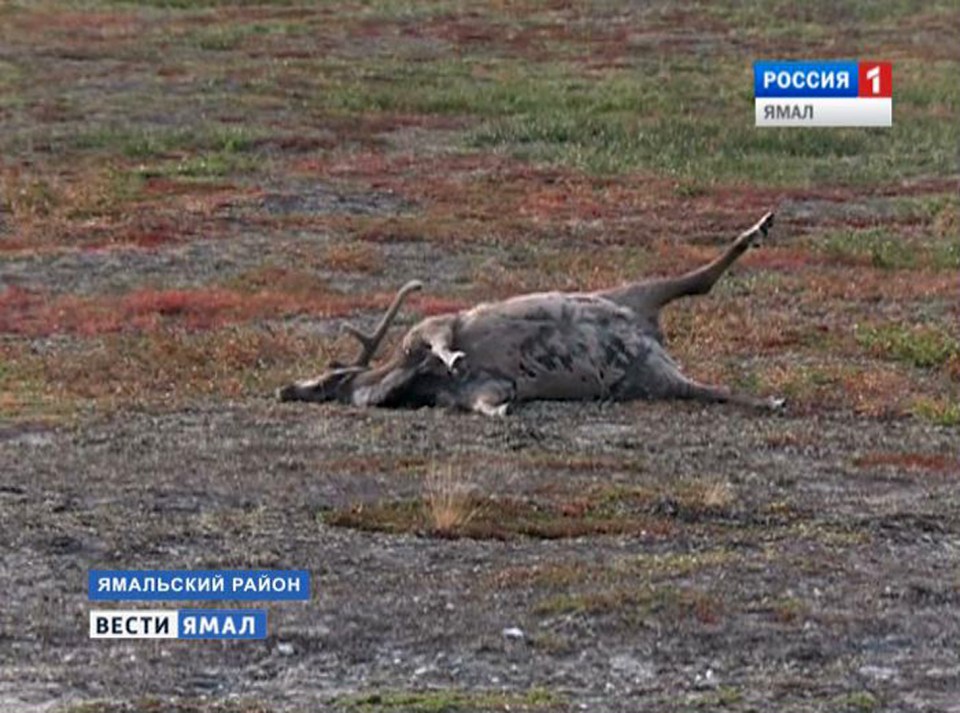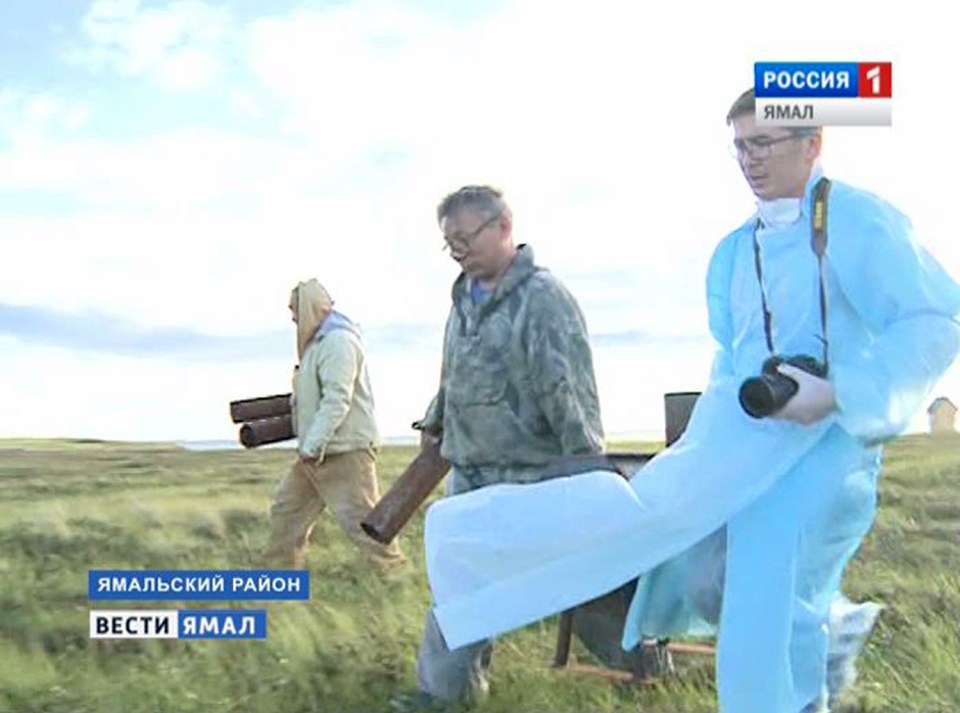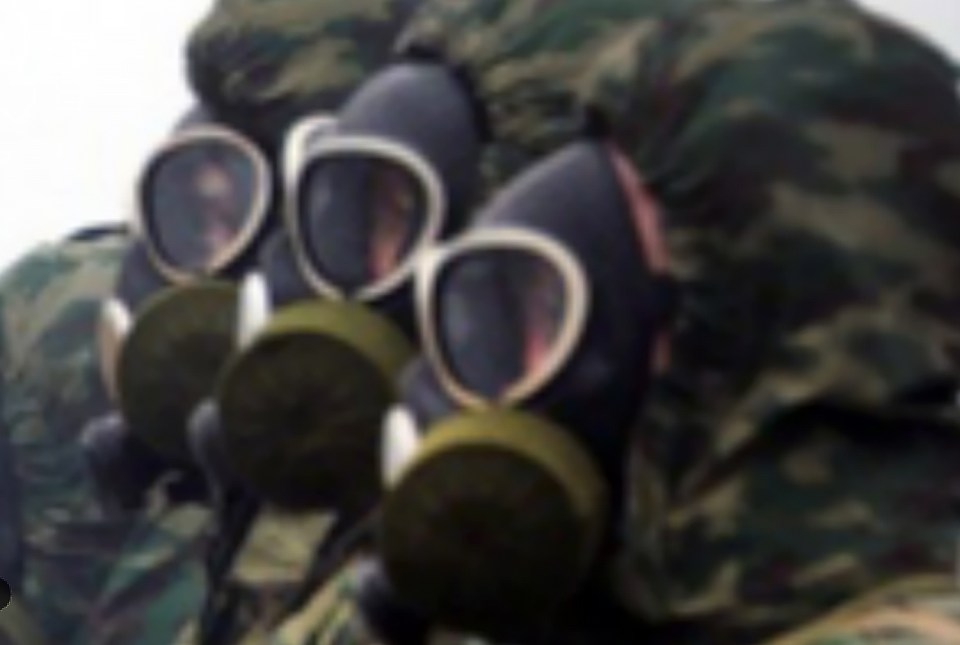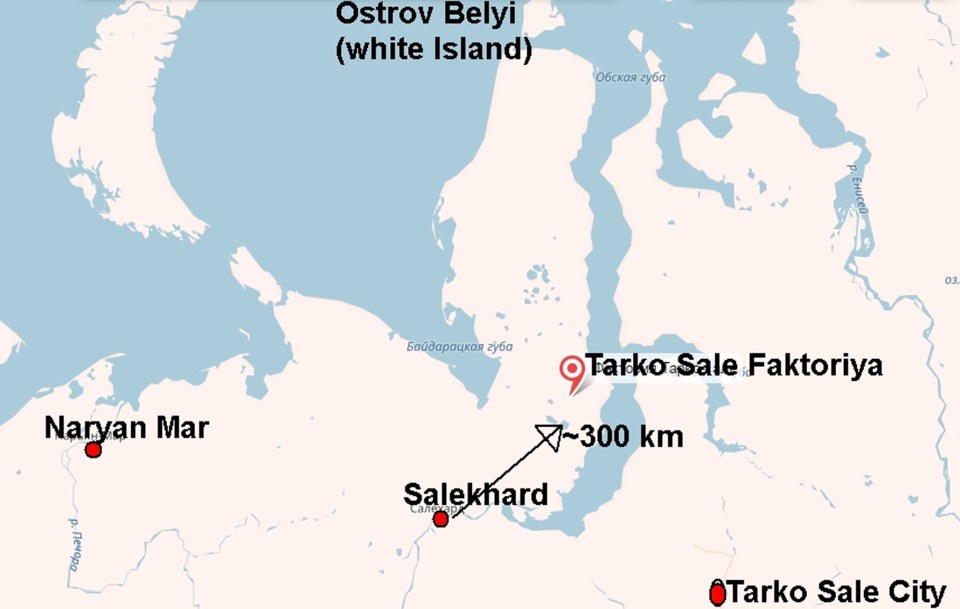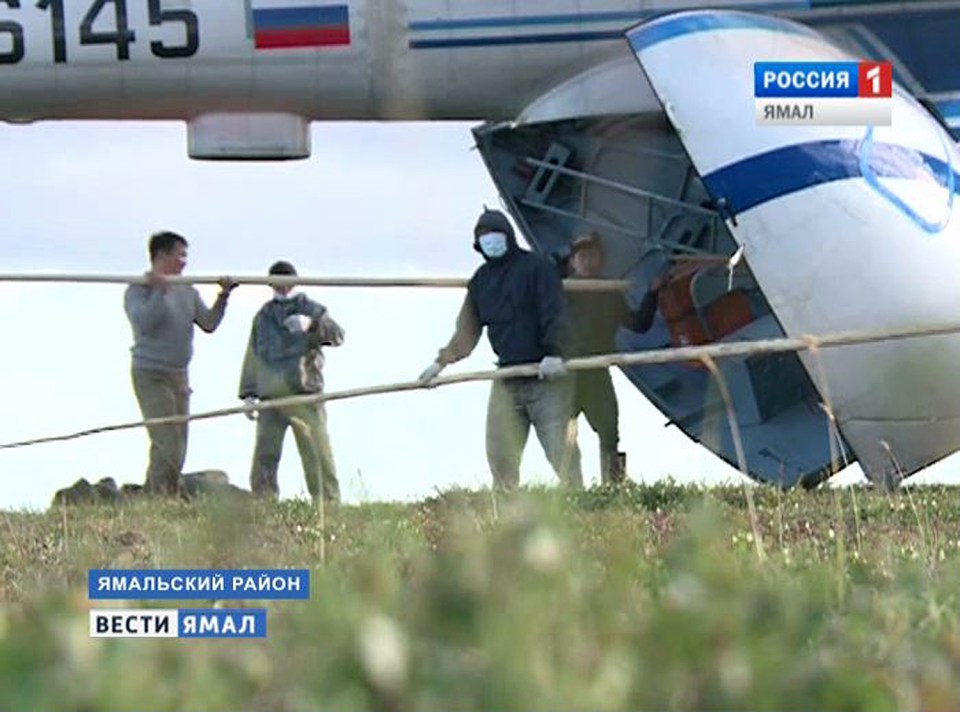Russian biological warfare troops rushed to Arctic after outbreak of lethal anthrax hospitalises 40
It follows the death of 1,200 reindeer suspected of contracting the disease

BIOLOGICAL warfare troops have been rushed to the Russian Arctic amid growing concerns over a serious anthrax outbreak.
A total of 40 people - more than half of them children - are now hospitalised amid fears they may have contracted the deadly infection.
This follows the death of 1,200 reindeer suspected of contracting the disease after a contaminated corpse - buried at least 70 years ago - thawed because of a heatwave in the Yamal peninsula in northern Siberia.
Russian experts have blamed global warming for the prolonged high temperatures - of up to 35C - at the Tarko-Sale Faktoria camp, north of the Arctic Circle.
There were dramatic scenes as the Russian army's Chemical, Radioactive and Biological Protection Corps, equipped with masks and bio-warfare protective clothing, flew to to regional capital Salekhard on a military Il-76 aircraft to deal with the emergency.
They were deployed by Defence Minister Sergei Shoigu to carry laboratory tests on the ground, detect and eliminate the focal point of the infection, and to dispose safely of dead animals.
Eight new people were admitted for observation to hospital in Salekhard on Friday, bringing the total to 40, said officials, as reported by The Siberian Times.
"As of now, there is no single diagnosis of the dangerous infection," said a spokesman for the governor of Yamalo-Nenets, Dmitry Kobylkin.
Those in hospital are all from a dozen nomadic families who herd reindeer in the far north of Russia.
RELATED STORIES
Medics were taking precautions to hospitalise any of the 'at risk' group who showed any symptoms of ill health.
More than half those in hospital are children, some of them babies.
Other herders have been evacuated at least 40 miles from the scene of the outbreak, first identified a week ago.
Anna Popova, director of state health watchdog Rospotrebnadzor, warned: "We need to be ready for any manifestations and return of infection."
The concern follows an outbreak of the Bubonic Plage in the Altai Mountains in southern Siberia earlier this month.
Professor Florian Stammler, of the University of Lapland, Finland, knows the site where the outbreak occurred and described it as a reindeer junction used by many herders.
"Due to the high mobility of herders using this site, utmost care has to be taken for preventing of anthrax being spread all over the Yamal Peninsula," he said.
Venison from this region is exported to Britain and other EU countries but local officials insisted the precautions they are taking will prevent any threat to this lucrative industry.
A spokesman for the governor insisted: 'This case won't affect exports or the quality of meat.'
Russian experts say the hot summer led to the frozen infection being "unlocked by the thawing of a diseased carcass from a long time ago", reported the news website.
If correct, there is real concern of centuries-old infections reappearing in permafrost regions like Siberia.
The Sakha Republic, east of this region, has some 200 burial grounds of animals that succumbed to anthrax in the past.
Tarko Sale Faktoriya, the focus of the outbreak at Yamal Peninsula
The army unit deployed on Friday is equipped with military helicopters as well as off road vehicles.
They face what the region governor calls 'an extremely challenging task of liquidating the consequences - and disinfecting the focus - of the infection.
"I think this perhaps will be the first in the world operation cleaning up a territory of mass deer mortality over such distances in the tundra," he said.
Anthrax is an infection caused by the bacterium Bacillus anthracis, which has been developed as an agent of warfare.
Among its forms are inhalation, which leads to fever, chest pain, and shortness of breath.
The intestinal form presents with nausea, vomiting, diarrhea, or abdominal pain.
Until the 20th century, it killed hundreds of thousands of people and livestock each year.


